Korean Chess - Want a Game of Janggi?
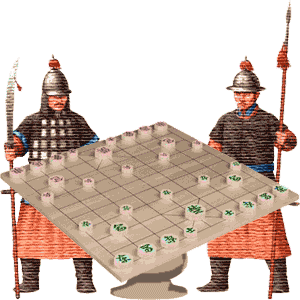
Korean Chess
Janggi is similar to Chinese Chess in many ways. It has the same 9x10 board although there is no river. The Korean elephants can move into enemy territory and take part in mating attacks. In the Chinese game this was impossible of course as the elephants could not cross the river.
This game is very popular on the streets of Korea. People typically play for small wagers to make things interesting. If you are regarded as a good player in Korea, you will be respected and admired.
Korean Chess has the same pieces as Chinese Chess although some of the movements have been changed. There are some other additional modifications to the rules besides that. Talk to us regarding your thoughts on Janggi.
History
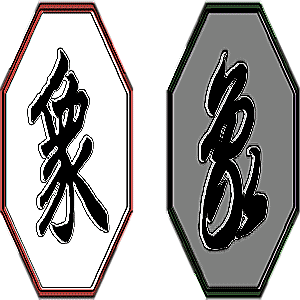
Korean Chess has a long history
It's earliest known mention in Korean literature was by an author called Chang Yu (1587-1638). The rules were already evolved then to the point they remain at now. Western civilization was unaware of this game until 1895. Stewart Culin lifted the lid on it with his book, Korean Games. With Notes on the Corresponding Games of China and Japan.
Some of the pieces in the Korean game enjoyed increased powers compared with their earlier counterparts in the Chinese version. Because the Korean elephant was more powerful than the Chinese elephant, it became impractical to confine it to it's own half of the board. The river was dropped from the Korean game, probably for this reason.
Rules - The Board
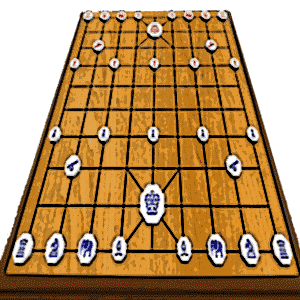
Korean Chess is played on a 9x10 point gameboard with no river
They are placed on the points or intersections that form the corners of the squares and operate between these points during the game. So the playing surface is actually bigger than if the game were played on the squares. There are 9x10 points on the board. That's 10 ranks between the two players and 9 files across.
Both sides have a palace located on the nine points making up the three central files on each player's first three files. The Palace has nine points. Both Palaces have diagonals formed by an "X" than runs from the four corners of the Palace. Pieces can also be moved along the diagonals.
Rules - The Palace Pieces
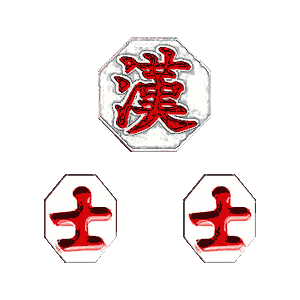
The General and the two Guards cannot leave the Palace
The General moves 1 point in any direction, along the lines in the Palace. He cannot leave the Palace at any stage of the game for any reason. He is confined to the nine points within it. He starts the game on the central point of the palace. When the General is captured the game is over.
The Guards move just as the General does. They cannot leave the Palace either. Their purpose is to protect the General. They start either side of the General on the back rank.
Rules - Back Row Pieces
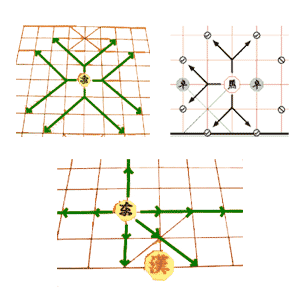
Korean Chess: Elephant, Horse and Chariot Moves
It's similar to the Horse's move, which starts outside it, except after moving 1 point straight in any direction, the Horse's move only continues 1 point diagonally. It's the same as the move of the Western Knight. The only difference being that unlike our Knight, the Korean Horse does not have the ability to jump and needs a clear path to move like any other piece.
The Chariot moves just as the Western Rook does. Straight in any direction along any file or rank or even Palace diagonal. As long as there is nothing blocking it's path.
Rules - Cannons and Soldiers
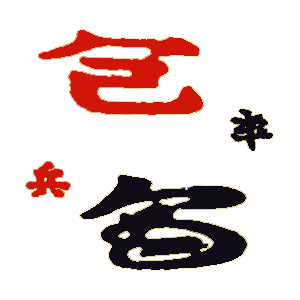
Korean Chess: Cannons and Soldiers
If it moves along the diagonal inside the palace between opposite corners, there needs to be a General or Guard on the central point to make it possible. If the next piece on the file or rank, on the other side of the screened piece is an enemy piece, then the cannon can take that piece. Cannons cannot jump over other Cannons, friend or foe, they cannot capture enemy Cannons.
As the game wears on and there are less pieces available to leap over, the Cannon, which is quite powerful early on sees it's mobility reduced dramatically. The soldiers move one point forward or one point sideways. When they reach the end of the board they can move only sideways.
Strategy
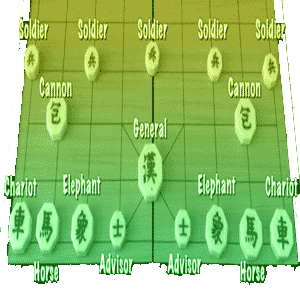
Korean Chess Strategy
This strategy is sometimes used as a last resort to get out of a mating net. If it is the only way to avoid immediate defeat, a player will sometimes play his General on to a file in the Palace where he will eye down his counterpart in the other Palace along the same file with no piece in between. This is known as a naked check.
It sometimes must be done if that's the only way of getting out of trouble but there is a catch. The player who plays such a check can now no longer win the game. He can only play for a draw so it does come at a price.
Play
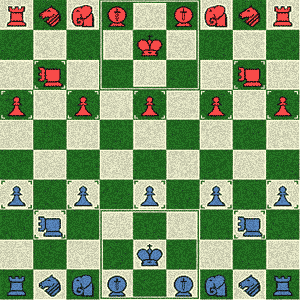
If you can't get to Seoul play Korean Chess online
You can play correspondence chess in a few different variants including Korean Chess. You can set up games that allow three days per move so that you can run multiple games simultaneously. That service is available at Dualpose.
Hopefully you will be able to brush your skills up to a high standard with lots of practice. Best of luck and enjoy your gaming.
Why do You Love Korean Chess?
Korean Chess or Janggi is a close relative of it's Chinese counterpart. There are some differences that set it apart. What is it about this game that you love? Tell us why it became so important to you. Or maybe you're only discovering it now. Whether you know and love this game real well or you're only getting to grips with it recently, talk about Janggi here!
What Other Visitors Have Said
Click below to see contributions from other visitors to this page...
Chinese Chess Improved Not rated yet
I like Janggi a lot.
The rule changes are all of the better: the pawns can support each other, the elephants are useful, the cannon don't dominate the …
Moving On
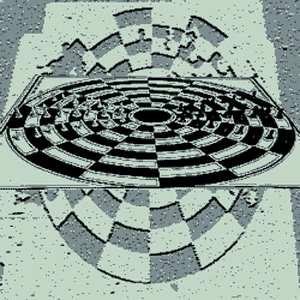
Circular Chess
With the pieces on the intersections instead of the actual squares it can make things tricky at the start, especially as you're still struggling to remember just exactly how each piece moves.
So what about a chess variant with a radical design shake up for the game board. Don't worry, some things will remain familiar. We're talking about a western variant here with the pieces we know so well. And we're back playing on a checkered board again. But let's say someone took our 8x8 chess board and made a ring out of it. We would have Circular Chess.






